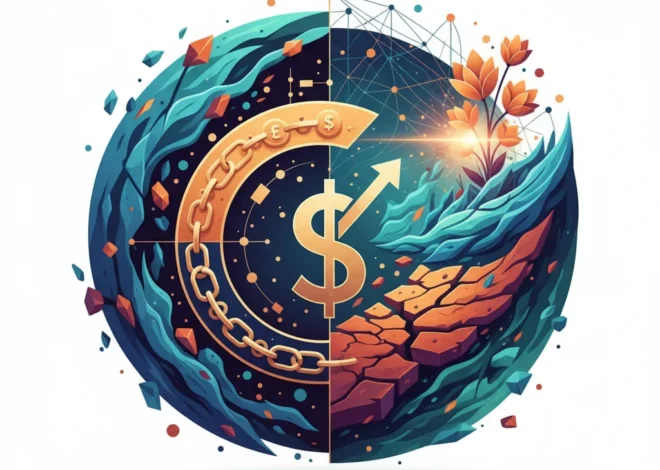
Beyond the Handshake: Decoding the Economic Impact of the “Strongest Ever” US-Japan Alliance
In the world of global politics, high-level summits often produce carefully crafted soundbites designed for headlines. Recently, a statement emerged from President Trump’s meeting with Japanese Prime Minister Sanae Takaichi, declaring the US-Japan alliance as being at its “strongest level” in history. While such pronouncements are common diplomatic fare, for investors, business leaders, and financial professionals, the real story lies beneath the surface. Beyond the protocol and photo opportunities, this reinforced partnership has profound implications for the global economy, international investing, and the future of financial technology.
The meeting, part of the President’s broader Asian tour, wasn’t just a ceremonial gesture. It was a signal—a reaffirmation of a strategic and economic partnership that has anchored the Pacific for decades. But in today’s volatile landscape, what does “strong” truly mean? It points to a convergence of interests in trade, technology, and security, creating ripples that will be felt across the stock market, in corporate boardrooms, and within the intricate world of international finance.
The Economic Bedrock: More Than Just a Military Pact
The US-Japan alliance is often viewed through a geopolitical lens, but its foundation is equally economic. Together, the two nations represent a colossal portion of global GDP. Their bilateral trade and investment relationship is one of the most significant in the world, directly influencing supply chains, corporate profits, and employment in both countries.
To understand the scale, consider the numbers. In 2023, the total trade in goods and services between the United States and Japan exceeded $300 billion, according to the Office of the U.S. Trade Representative. Japan is also one of the largest foreign direct investors in the United States, with Japanese companies supporting hundreds of thousands of American jobs across sectors like automotive manufacturing, technology, and infrastructure.
This deep integration means that a stable, predictable political relationship is paramount for market stability. The recent affirmation of the alliance’s strength provides a degree of certainty that investors crave, suggesting continuity in trade policies and a collaborative approach to economic challenges.
Here’s a snapshot of the key economic ties that form the backbone of this critical alliance:
| Economic Pillar | Key Statistics & Significance |
|---|---|
| Bilateral Trade | Over $200 billion in goods trade annually, with major categories including vehicles, machinery, and electronics. A smooth trade flow is critical for both consumer markets and industrial supply chains. |
| Foreign Direct Investment (FDI) | Japan’s cumulative FDI in the U.S. is over $700 billion, making it a top source of foreign investment. This capital fuels innovation and job creation. (source) |
| Financial Interdependence | Japan is one of the largest foreign holders of U.S. Treasury securities, playing a crucial role in financing U.S. government debt. This links the two nations’ financial systems inextricably. |
| Technological Collaboration | Joint ventures and research in critical areas like semiconductors, AI, and green energy are expanding, aiming to secure supply chains and maintain a competitive edge. |
This economic symbiosis is the context in which political statements must be analyzed. A “strong” alliance signals that these pillars are secure, providing a tailwind for companies operating in these corridors and for investors allocating capital. BHP's Paradox: Why the World's Biggest Miner is Bullish Amidst China's Economic Storm
Currency, Central Banking, and the Forex Trader’s Gaze
Perhaps nowhere is the intersection of politics and finance more apparent than in the currency markets. The USD/JPY pair is one of the most heavily traded in the world, and its movements are a direct reflection of the perceived economic health and policy direction of both nations. A declaration of a strong alliance can have a stabilizing effect on currency trading, reducing the perceived risk of sudden policy shifts or trade disputes that could trigger volatility.
However, the current macroeconomic environment presents a fascinating divergence. The U.S. Federal Reserve has been engaged in a cycle of monetary tightening to combat inflation, while the Bank of Japan has maintained its ultra-loose policy for years. This policy gap has been a primary driver of the yen’s weakness against the dollar. A strong political alliance suggests that any interventions or policy coordination will be handled collaboratively, rather than contentiously. For forex traders and international investors, this is a crucial piece of information, as it lowers the risk of a “currency war” scenario.
The field of economics teaches us that capital flows to where it can find the best returns, adjusted for risk. Political stability is a major component of that risk calculation. When leaders like Trump and Takaichi project unity, it reassures global capital that the deep financial ties—from Japan’s holdings of U.S. debt to American investments in the Japanese stock market—are on solid ground.
The New Frontier: Fintech, Blockchain, and Supply Chain Security
Looking beyond traditional metrics, the future of the US-Japan partnership is increasingly being defined by technology. The alliance is evolving to address 21st-century challenges, and this is where exciting opportunities in fintech and other advanced sectors emerge.
Both nations have identified the strategic importance of secure and resilient supply chains, particularly for critical components like semiconductors. A strong alliance translates into deeper collaboration on R&D, manufacturing, and policy to reduce dependence on less stable regions. This has direct implications for technology stocks and the broader market, as supply chain disruptions have been a major source of economic pain in recent years.
Furthermore, this collaboration is spilling over into the world of financial technology. Japan, with its massive and established banking sector, is actively seeking to modernize its financial infrastructure. The U.S., a global leader in fintech innovation, is a natural partner. We are likely to see an increase in:
- Cross-Border Fintech Ventures: U.S. fintechs expanding into the Japanese market and vice-versa, particularly in areas like digital payments, wealth management, and regulatory technology (RegTech).
- Blockchain and DLT Exploration: Joint initiatives exploring the use of blockchain for more efficient and secure cross-border trade finance, supply chain tracking, and even central bank digital currencies (CBDCs). The Bank of Japan has been actively experimenting with a digital yen, and collaboration with U.S. institutions could accelerate these efforts.
- Cybersecurity Cooperation: As financial systems become more digitized, the threat of cyberattacks grows. A core component of the modern alliance is enhanced intelligence sharing and joint defense protocols to protect critical financial infrastructure.
This technological alignment is not just about national security; it’s about economic competitiveness. It creates a fertile ground for innovation and presents new avenues for investing in companies at the forefront of this digital transformation. Beyond the Buy Button: Why the Future of Investing Depends on a Digital Revolution
Actionable Insights for the Modern Investor
So, how does a C-suite executive or an individual investor translate this high-level geopolitical news into a tangible strategy? The key is to look at the sectors and trends that are directly supported by this reinforced partnership.
- Defense and Aerospace: This is the most direct beneficiary. A stronger security alliance means continued, and likely increased, cooperation on defense technology and procurement.
- Technology and Semiconductors: Companies involved in the semiconductor supply chain—from design to manufacturing—stand to gain from joint policies aimed at onshoring and “friend-shoring” production.
- Automotive and Manufacturing: Stability in trade relations is a huge boon for Japanese automakers with significant operations in the U.S. and vice versa. It reduces the threat of tariffs and other trade barriers that could disrupt operations.
- Financial Services and Fintech: As discussed, the potential for growth in cross-border financial technology is immense. Investors should watch for companies that are effectively bridging the gap between the U.S. and Japanese markets.
Conversely, it’s also crucial to monitor the risks. A change in leadership in either country could alter the dynamic, and underlying economic tensions over issues like agricultural imports or currency levels could resurface. A diversified approach remains the most prudent strategy. The Unseen Engine: Is America's Real Skilled Visa Strategy Hiding in Plain Sight?
Conclusion: A Partnership for a New Economic Era
The statement that the US-Japan alliance is at its “strongest level” is far more than a diplomatic platitude. It is a powerful signal to the global markets that the world’s first and third-largest economies are deeply aligned on the critical issues of our time. This alignment provides a crucial layer of stability in an otherwise uncertain world, underpinning everything from global trade flows and currency markets to the future of blockchain and fintech.
For those engaged in finance, investing, and business, the message is clear: the economic partnership between the United States and Japan is not just being maintained; it’s being fortified for a new era of strategic competition and technological change. Understanding the deep economic currents flowing beneath the political headlines is essential for navigating the opportunities and risks that lie ahead.


